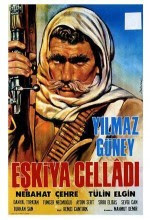
Mavi Boncuk |
COLD
2013, Colour, Turkey, Focus on World Cinema (full length movies)
PRODUCTION TEAM
Director : UGUR YÜCEL
Screenwriter : Ugur Yücel
Cinematographer : Emre Tanyildiz
Editor : Ulas Cihan Simsek, Mark Marnikovic
Cast : Cenk Medet Alibeyoglu, A. Rifat Sungar, Valeria Skorokhodova, Yulia Vanyukova, Yulia Erenler, Sebnem Bozoklu, Ezgi Mola
Music : Murat Basaran, Ugur Yucel
Film production and Sales : Erol Avci, TMC Film Yapim Ltd. STI, Gazeteciler Sitesi, Dergiler SK 29, Esentepe, Istanbul 34394(Turquie), tél.: (+90-212) 288 92 60, yasemin@tmc.com.tr
SYNOPSIS
In Kars, a Turkish town close to the Georgian border, life is dominated by the weather and by tradition. Marriages are arranged and when winter comes, snow blankets everything. Three Russian sisters work in the local nightclub. Balabey, a railway worker who has known no women other than his wife, falls in love with Irina, the youngest of them, but his fragile happiness is soon threatened by his irresponsible brother, who was forced to marry the sister of Balabey's pregnant wife. Irina is scheduled to return to Moscow and Balabey is determined to stop her departure.
DIRECTOR
Born in Istanbul, Turkey in 1957, U?UR YÜCEL studied acting at the Istanbul Conservatory and worked as a stage actor and stand-up comedian, also appearing in cabaret shows. In 1984 he also began acting in films. He directed his first short film in 1990. His features: TOSS UP (2003), THE WOMAN OF MY LIFE (2006), THE DRAGON TRAP (2010).





























